Lifestyle
Bracketology a settled national pastime as the 2025 NCAA Tournament arrives
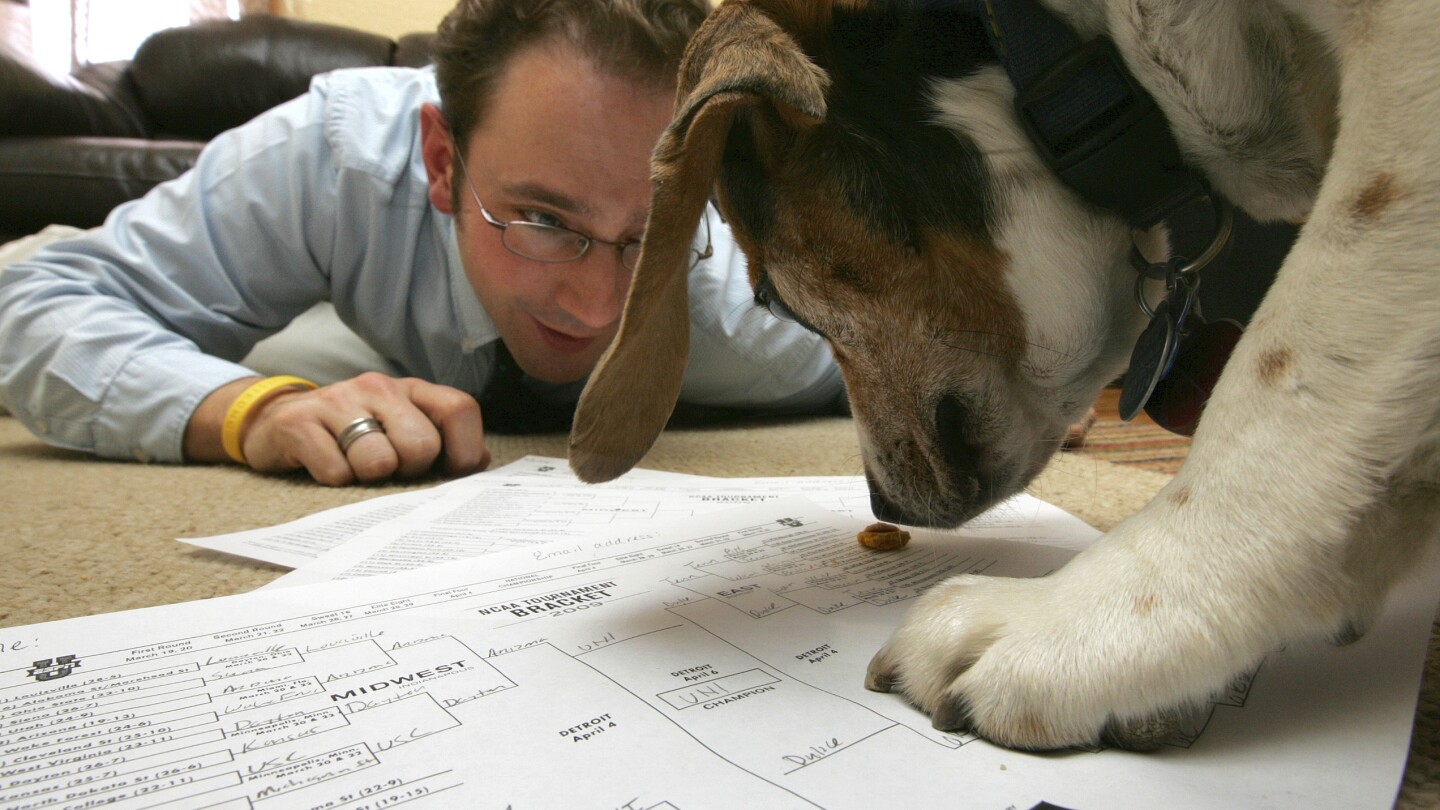
INDIANAPOLIS (AP) — When Bryce Yoder needs a study break this time of year, the college student flips on a TV and attends his favorite March Madness class — bracket science.
The 19-year-old sports management major at Indiana University-Indianapolis studies hard to learn the secrets of picking winners in the nearly dozen NCAA Tournament bracket pools he hopes to enter before Thursday’s first-round games. It takes time, patience and some lucky bounces to get those picks right.
Yoder is hardly alone. Millions of Americans — from hard-core sports junkies to casual fans and school alumni to those with no rooting interest — engage in this annual national pastime by filling out a tourney bracket and seeing how they fare. Winning is possible, though few hold out much hope of a perfect bracket: The NCAA says the odds of that are 1 in 9,223,372,036,854,775,808 if you wing it and a still-absurd 1 in 120.2 billion if you know a bit about hoops.
For players like Yoder, it’s more about proving he’s the best.
“The satisfaction of being right,” he said in explaining why he fills out so many brackets. “Really, it’s about having the best bracket possible, whether that’s with my friends and family or just the leaderboard over a random bunch of people that I’ve never met. I’m just so competitive.”
From online gambling to office pools to family contests, brackets are big business and a big distraction. A study released in 2023 by Challenger, Gray & Christmas, a work outplacement firm, estimated $17.3 billion is lost in productivity during the three-week tourney. A Finance Buzz survey back then also found 36% of employees tune into the games during work hours, and nearly 25% use paid time off or sick days.
Even elective surgery companies now advertise that customers can have mid-March procedures so they can recover — and watch basketball — at the same time.
In the beginning
It seems almost unfathomable today, but brackets meant virtually nothing for about the first 50 years of the NCAA tourney, which dates to 1939 and this year is holding its 86th edition.
During the ‘70s, though, the changes began in earnest.
The NCAA tourney expanded from 25 to 32 teams in 1975, the first year leagues could send two teams. Seeding started in 1978, and the field grew to 40 in 1979 and to 48 in 1980 when organizers dropped the restriction on how many league teams could play.
But the real revolution really with the 1979 title game between Michigan State and Indiana State.
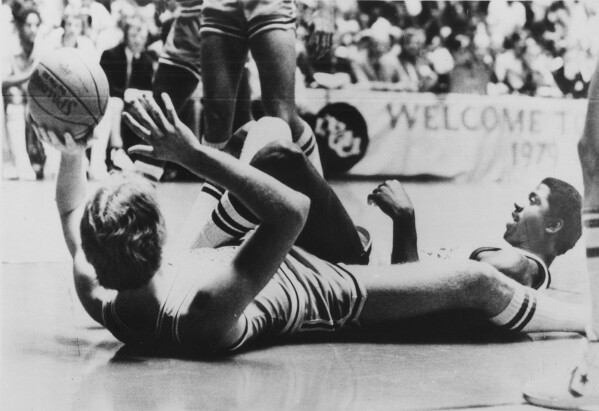
Indiana State’s Larry Bird, left, lies on his back to toss the ball during a scramble with Earvin “Magic” Johnson, right, during NCAA Championship game in Salt Lake City, Utah, March 26, 1979. (AP Photo)
That Magic Johnson-Larry Bird matchup drew a 24.1 television rating, still the tourney record, and it gave everyone a glimpse into what college basketball’s biggest event could become at the same time an 8-year-old boy named Charlie Creme looked into his future.
“I cut the (men’s) bracket out of the newspaper in 1979 and had it on the pantry door in my family’s kitchen,” said Creme, now ESPN’s women’s basketball bracketologist. “I was filling it out, making actual predictions and I couldn’t wait till a game ended and I could run up to the pantry door and advance the next team in the tournament. Within a couple years, I was making my own brackets with big pieces of oak tag (paper) and a pencil and a ruler.”
Soon, he’d have company as the tourney grew.
America’s first all-sports network, ESPN, broadcast the 16 first-round games, 12 on tape delay, in 1980. CBS wrested the broadcast rights away from NBC in 1982 with a three-year deal for $16 million annually and the promise of expanded coverage including the first televised selection show.
Suddenly, brackets mattered and broadcasters such as Dick Vitale stoked long debates over which teams belonged, which did not and who would win games. Live, daily telecasts on ESPN spurred interest, too, heading into 1985, the first 64-team field and introduced a future NCAA executive to fill out the bracket.
“The first one I remember filling out was 1985,” said Dan Gavitt, the son of Big East co-founder Dave Gavitt and now the NCAA senior vice president for basketball. “I had four Big East teams in the Final Four and I was right on three of them. Boston College got beat by Memphis in in the regional finals.”
Gavitt, like Creme, was hooked and brackets became fashionable.
Could it happen again on the women’s side? Perhaps.
After seeing ticket sales, television ratings and coverage of the sport soar in the last few years with more to come thanks to stars such as Paige Bueckers, Hannah Hidalgo and JuJu Watkins, Creme thinks women’s brackets are on a similar trajectory.
“We might be seeing 1985-95,” Creme said. “Star players in the men’s game back then, stuck around longer. Right now we’re in that period where Caitlin Clark played four years in college and as the rules stand now, JuJu Watkins has to play four years and Paige could if she wanted — she’s not going to — but could stick around another year. That’s where the men’s game was in that period.”
Upset city, baby
In its infancy, the bracket phenomenon was geared to teenagers and college students like Yoder who watched multiple games.
Soon, office pools and games among family members with entry fees and prize money became popular, too. In some cases, all you did was pluck a name out of a hat.
Back then, the NCAA frowned on such practices, labeling it gambling. Today, the NCAA runs its own online bracket game as part of its “fan engagement.”
Still, the prize pool only fueled interest. So did the 1980s national championship games that became must-see TV — and the upset factor.
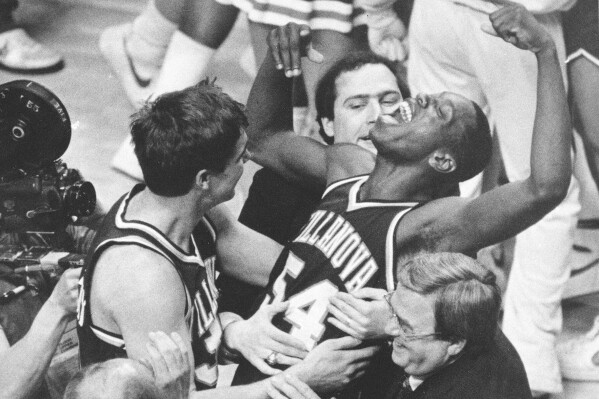
FILE – In this April 1, 1985, file photo, Villanova’s Ed Pinckney (54) yells out as he is surrounded by teammates after defeating Georgetown 66-64 in the NCAA college basketball Final Four championship game, in Lexington, Ky. (AP Photo/Gary Landers, File)
From surprising title runs by North Carolina State in 1983 and Villanova in 1985 to Princeton’s near-upset of Georgetown in 1989, it seemed every team was in the mix and nobody would pick all the winners.
“There will never be a perfect bracket,” ESPN men’s basketball bracketologist Joe Lunardi said. “That’s just not going to happen. When Warren Buffet offered $10 million for perfect bracket, he knew he wasn’t going to pay that out.”
Those daunting odds haven’t stopped anyone from filling out brackets.
“If I feel really strongly about a game, I’ll probably pick the same outcome more times than not,” Yoder said, referring to how he handles multiple brackets. “But I try to throw some silly type of stuff that wouldn’t necessarily have a good chance of happening, like upsets, because that’s just naturally going to happen.”
The tools
In this May 27, 2010 file photo, President Barack Obama looks over the bracket with Duke University basketball Coach Mike Krzyzewski in the Rose Garden of the White House in Washington, where he honored the team. (AP Photo/Alex Brandon, File)
Figuring out how to pick teams and games has evolved the years.
Selection committee members use tangible measures such as wins and losses, strength of schedule and NET rankings to round out the 68-team field. Other measures include quad victories, which vary in how they’re compiled and applied. In an era of analytics, sites such as kenpom.com have become regular components for hard-core and casual fans.
The NCAA certainly is paying attention.
Gavitt said he filled out brackets in the early years of the NET just to see how reliable the rankings were to results And when the topic of expansion is broached, NCAA officials look to see how the potential new bracket would fit on a single printed page.
The question, of course, is how far can this go and whether artificial intelligence can become the next big thing when it comes to picking winners.
“If AI did it, then the analysis would not be as much fun or as interesting,” Creme said. “I don’t know that the NCAA would ever go that far. I kind of hope not because I like the human element. If it’s eliminated, if we know the AI formula, then it’s sort of over.”
___
AP March Madness bracket: https://apnews.com/hub/ncaa-mens-bracket and coverage: https://apnews.com/hub/march-madness
Get poll alerts and updates on the AP Top 25 throughout the season. Sign up here.
Lifestyle
Allergy season: How to check pollen levels and alleviate symptoms
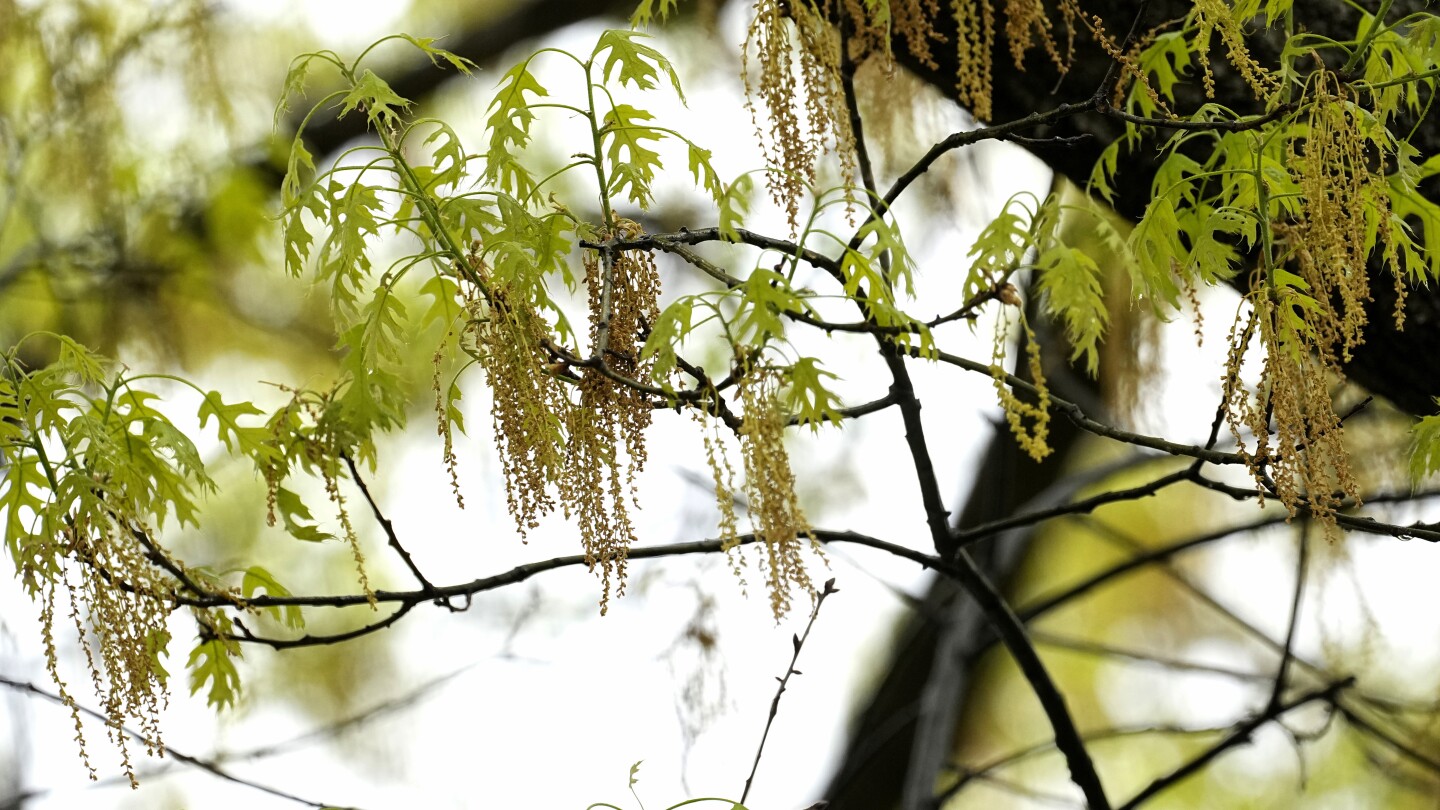
ATLANTA (AP) — Allergy season can be miserable for tens of millions of Americans when trees, grass, and other pollens cause runny noses, itchy eyes, coughing and sneezing.
Where you live, what you’re allergic to and your lifestyle can make a big difference when it comes to the severity of your allergies. Experts say climate change is leading to longer and more intense allergy seasons, but also point out that treatments for seasonal allergies have become more effective over the last decade.
Here are some tips from experts to keep allergy symptoms at bay — maybe even enough to allow you to enjoy the outdoors.
Where are pollen levels the worst this year?
The Asthma and Allergy Foundation of America issues an annual ranking of the most challenging cities to live in if you have allergies, based on over-the-counter medicine use, pollen counts and the number of available allergy specialists.
This year, the top five cities are: Wichita, Kansas; New Orleans; Oklahoma City; Tulsa, Oklahoma; and Memphis.
Which pollens cause allergies?
There are three main types of pollen. Earlier in the spring, tree pollen is the main culprit. After that grasses pollinate, followed by weeds in the late summer and early fall.
Some of the most common tree pollens that cause allergies include birch, cedar, cottonwood, maple, elm, oak and walnut, according to the Asthma and Allergy Foundation of America. Grasses that cause symptoms include Bermuda, Johnson, rye and Kentucky bluegrass.
This article is part of AP’s Be Well coverage, focusing on wellness, fitness, diet and mental health. Read more Be Well.
How do I track pollen levels?
Pollen trackers can help you decide when to go outside. The American Academy of Allergy Asthma and Immunology tracks levels through a network of counting stations across the U.S. Counts are available at its website and via email.
Limit your exposure to pollens
The best and first step to controlling allergies is avoiding exposure. Keep the windows in your car and your home closed, even when it’s nice outside.
If you go outside, wearing long sleeves can keep pollen off your skin to help ward off allergic reactions, said Dr. James Baker, an allergist at the University of Michigan. It also provides some sun protection, he added.
When you get home, change your clothes and shower daily to ensure all the pollen is off of you — including your hair. If you can’t wash your hair every day, try covering it when you go outside with a hat or scarf. Don’t get in the bed with your outside clothes on, because the pollen will follow.
It’s also useful to rinse your eyes and nose with saline to remove any pollen, experts said. And the same masks that got us through the pandemic can protect you from allergies — though they won’t help with eye symptoms.
How to relieve allergy symptoms
Over-the-counter nasal sprays are among the most effective treatments for seasonal allergies, experts said.
But the vast majority of patients use them incorrectly, irritating parts of the nose, said Dr. Kathleen Mays, an allergist at Augusta University in Georgia. She suggested angling the nozzle outward toward your ear rather than sticking it straight up your nose.
Over-the-counter allergy pills like Claritin, Allegra and Zyrtec are helpful, but may not be as effective as quickly since they’re taken by mouth, experts said.
Experts also said that if your allergy symptoms are impacting your quality of life, like causing you to lose sleep or a lack focus at work or school, it might be time to consider an allergist appointment for immunotherapies.
Some remedies for allergy relief that have been circulating on social media or suggested by celebrities — like incorporating local honey into your diet to expose yourself to pollen — have been debunked.
Dr. Shayam Joshi, an allergist at Oregon Health and Science University, said that’s because the flowers that bees pollinate typically don’t contain the airborne pollen that causes allergy symptoms.
Is allergy season changing?
With climate change, winters are milder and growing seasons are longer, meaning there’s more opportunity for pollen to stay in the air, resulting in longer and more severe allergy seasons.
In many areas across the country, pollen counts have broken decades of records. In late March, the Atlanta Allergy and Asthma Center measured a pollen count of over 14,000 grains per cubic meter, which is considered extremely high.
___
The Associated Press Health and Science Department receives support from the Howard Hughes Medical Institute’s Science and Educational Media Group and the Robert Wood Johnson Foundation. The AP is solely responsible for all content.
Lifestyle
The 250th anniversary of the Battles of Lexington and Concord opens debate over US independence
NEW YORK (AP) — The American Revolution began 250 years ago, in a blast of gunshot and a trail of colonial spin.
Starting with Saturday’s anniversary of the Battles of Lexington and Concord, the country will look back to its war of independence and ask where its legacy stands today.
The semiquincentennial comes as President Donald Trump, the scholarly community and others divide over whether to have a yearlong party leading up to July 4, 2026, as Trump has called for, or to balance any celebrations with questions about women, the enslaved and Indigenous people and what their stories reveal.
The history of Lexington and Concord in Massachusetts is half-known, the myth deeply rooted.
What exactly happened at Lexington and Concord?
Reenactors may with confidence tell us that hundreds of British troops marched from Boston in the early morning of April 19, 1775, and gathered about 14 miles (22.5 kilometers) northwest on Lexington’s town green.
Firsthand witnesses remembered some British officers yelled, “Thrown down your arms, ye villains, ye rebels!” and that amid the chaos a shot was heard, followed by “scattered fire” from the British. The battle turned so fierce that the area reeked of burning powder. By day’s end, the fighting had continued around 7 miles (11 kilometers) west to Concord and some 250 British and 95 colonists were killed or wounded.
But no one has learned who fired first, or why. And the revolution itself was initially less a revolution than a demand for better terms.
Woody Holton, a professor of early American history at the University of South Carolina, says most scholars agree the rebels of April 1775 weren’t looking to leave the empire, but to repair their relationship with King George III and go back to the days preceding the Stamp Act, the Tea Act and other disputes of the previous decade.
“The colonists only wanted to turn back the clock to 1763,” he said.
Stacy Schiff, a Pulitzer Prize winning historian whose books include biographies of Benjamin Franklin and Samuel Adams, said Lexington and Concord “galvanized opinion precisely as the Massachusetts men hoped it would, though still it would be a long road to a vote for independence, which Adams felt should have been declared on 20 April 1775.”
But at the time, Schiff added, “It did not seem possible that a mother country and her colony had actually come to blows.”
A fight for the ages
The rebels had already believed their cause greater than a disagreement between subjects and rulers. Well before the turning points of 1776, before the Declaration of Independence or Thomas Paine’s boast that “We have it in our power to begin the world over again,” they cast themselves in a drama for the ages.
The so-called Suffolk Resolves of 1774, drafted by civic leaders of Suffolk County, Massachusetts, prayed for a life “unfettered by power, unclogged with shackles,” a fight that would determine the “fate of this new world, and of unborn millions.”
The revolution was an ongoing story of surprise and improvisation. Military historian Rick Atkinson, whose “The Fate of the Day” is the second of a planned trilogy on the war, called Lexington and Concord “a clear win for the home team,” if only because the British hadn’t expected such impassioned resistance from the colony’s militia.
The British, ever underestimating those whom King George regarded as a “deluded and unhappy multitude,” would be knocked back again when the rebels promptly framed and transmitted a narrative blaming the royal forces.
“Once shots were fired in Lexington, Samuel Adams and Joseph Warren did all in their power to collect statements from witnesses and to circulate them quickly; it was essential that the colonies, and the world, understand who had fired first,” Schiff said. “Adams was convinced that the Lexington skirmish would be ‘famed in the history of this country.’ He knocked himself out to make clear who the aggressors had been.”
A country still in progress
Neither side imagined a war lasting eight years, or had confidence in what kind of country would be born out of it. The founders united in their quest for self-government but differed how to actually govern, and whether self-government could even last.
Americans have never stopped debating the balance of powers, the rules of enfranchisement or how widely to apply the exhortation, “All men are created equal.”
“I think it’s important to remember that the language of the founders was aspirational. The idea that it was self-evident all men were created equal was preposterous at a time when hundreds of thousands were enslaved,” said Atkinson, who cites the 20th-century poet Archibald MacLeish’s contention that “democracy is never a thing done.”
“I don’t think the founders had any sense of a country that some day would have 330 million people,” Atkinson said. “Our country is an unfinished project and likely always will be.”
Lifestyle
Sweets from the sky! A helicopter marshmallow drop thrills kids in suburban Detroit
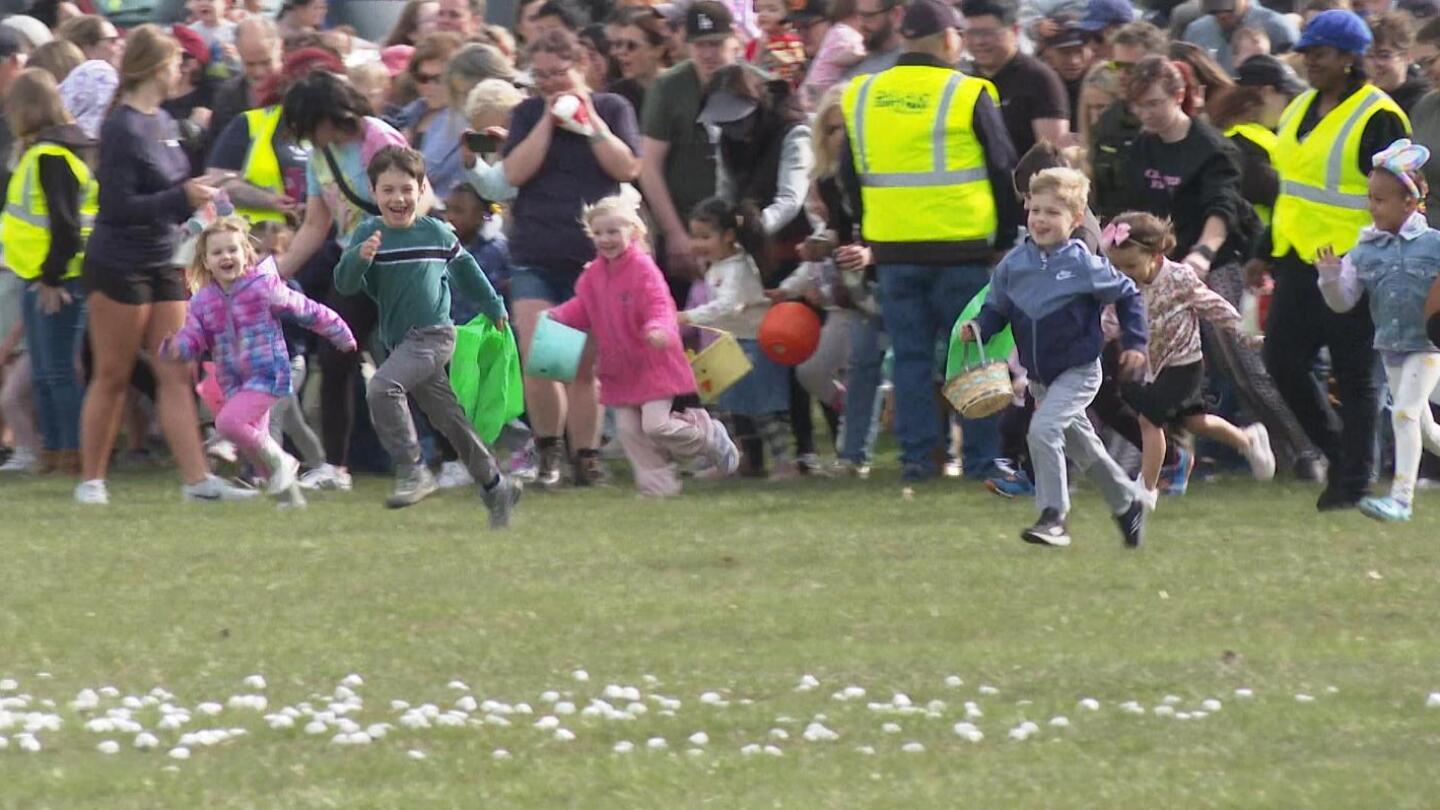
ROYAL OAK, Mich. (AP) — It’s spring in Detroit — warm weather, a few clouds, and a 100% chance of marshmallow downpours.
The source? A helicopter zooming above the green lawn of Worden Park on Friday, unloading sack-fulls of fluffy treats for hundreds of kids waiting eagerly below, some clutching colorful baskets or wearing rabbit ears.
The children cheered and pointed as the helicopter clattered by on its way to the drop zone. Volunteers in yellow vests made sure kids didn’t rush in and start grabbing marshmallows until after the deluge was complete.
For anyone worried about hygiene, don’t fret. The annual Great Marshmallow Drop isn’t about eating the marshmallows — kids could exchange them for a prize bag that included a water park pass and a kite.
The marshmallow drop has been held for over three decades in the Detroit suburb of Royal Oak, Michigan, hosted by Oakland County Parks.
One toddler, Georgia Mason, had no difficulty procuring a marshmallow at her first drop, her dad Matt said.
“Probably the most exciting part was seeing the helicopters. But once we saw the marshmallows drop, we got really excited,” Matt Mason said.
“And, yeah, we joined the melee,” he said, “We managed to get one pretty easy.”
Organizers said 15,000 marshmallows were dropped in all.
The helicopter made four passes, dropping marshmallows for kids in three age categories: 4-year-olds and younger, 5-7-year-olds, and those ages 8 to 12. A drop for kids of all ages with disabilities came later in the day.
“We do it because it’s great for community engagement,” Oakland County recreation program supervisor Melissa Nawrocki said.
“The kids love it,” she continued. “The looks on their faces as they’re picking up their marshmallow and turning in the marshmallow for prizes is great.”
-

 Education1 day ago
Education1 day agoHarvard’s battle with the Trump administration is creating a thorny financial situation
-

 Sports2 days ago
Sports2 days agoAaron Rodgers ‘not holding anybody hostage’ as he decides his future, retirement a possibility
-

 Lifestyle2 days ago
Lifestyle2 days agoThousands of pilgrims trek through New Mexico desert to historic adobe church for Good Friday
-

 Europe1 day ago
Europe1 day agoTrump’s ‘lone ranger’: How Steve Witkoff became the defacto point man on America’s foreign policy challenges
-

 Lifestyle1 day ago
Lifestyle1 day agoSweets from the sky! A helicopter marshmallow drop thrills kids in suburban Detroit
-

 Europe1 day ago
Europe1 day agoThe Trump administration says Europe is taking advantage of the US. That’s not exactly true
-

 Conflict Zones1 day ago
Conflict Zones1 day agoTrump says US may ‘pass’ on helping end war if Russia, Ukraine resist deal | Russia-Ukraine war News
-

 Sports2 days ago
Sports2 days agoManchester United pulls off ‘miracle’ Europa League victory against Lyon




